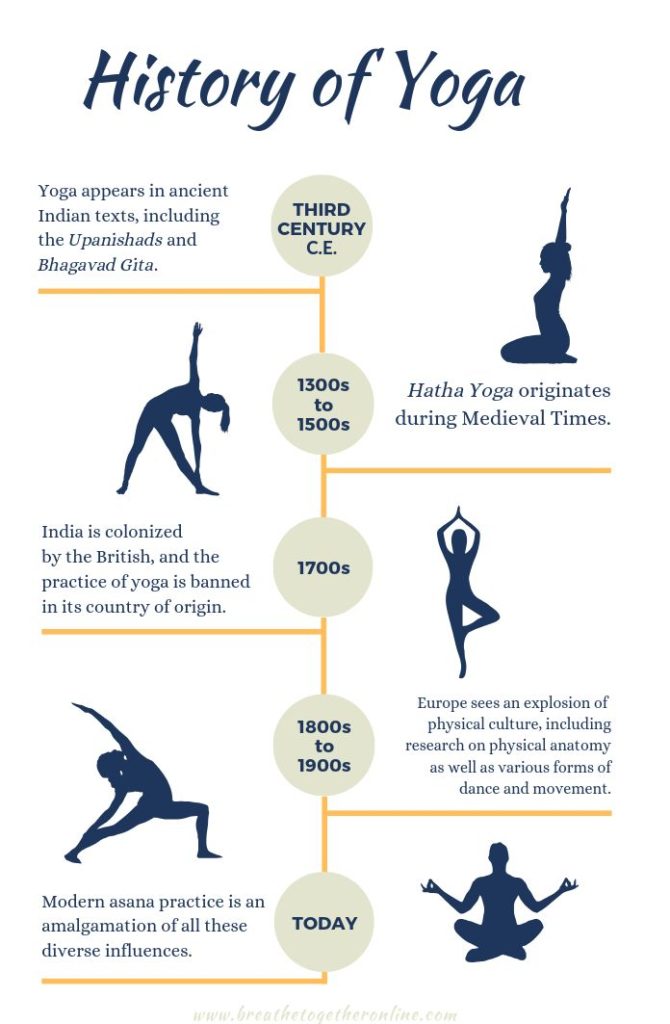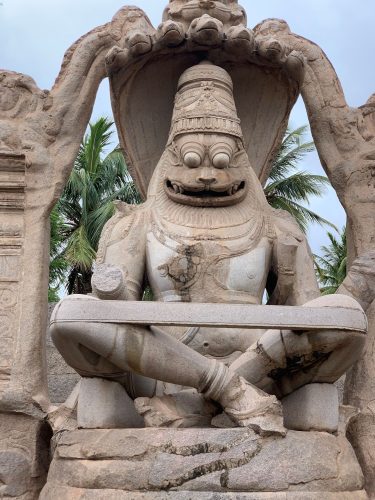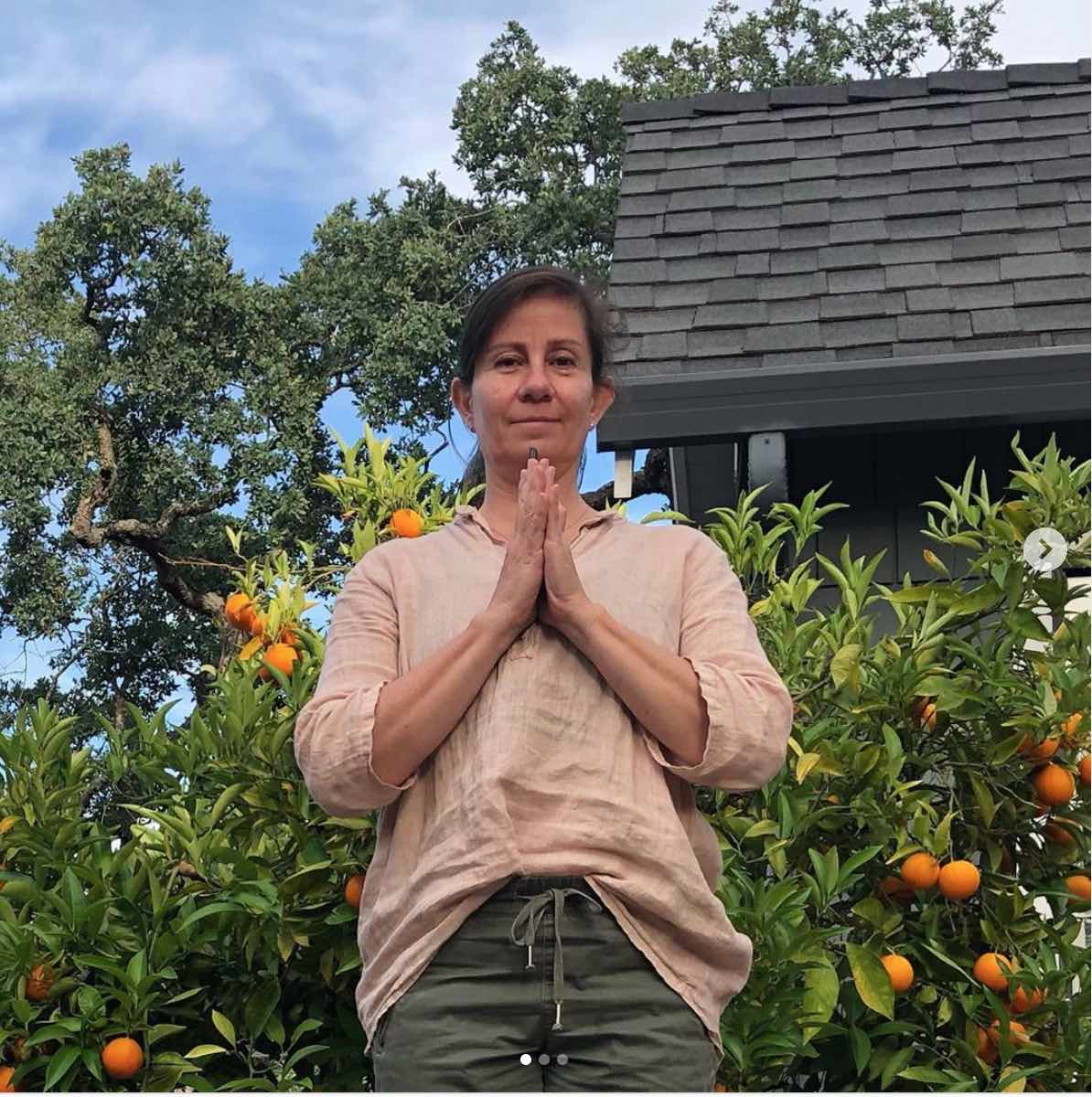Today, yoga is a multibillion dollar industry with a burgeoning influence in health, fitness, fashion, pop culture, and, yes, politics and society in general. Yet, there is little awareness or emphasis on honoring the traditional aim or the cultural roots of yoga.
Is there acknowledgement of the meandering path from India to the Western world? Is this ignorance merely a gap in our education? – or, is it more sinister in its willful denial of the roots of this practice? Are we knowingly (or unknowingly) appropriating another culture while we practice yoga? What is cultural appropriation versus cultural appreciation in the context of our yoga practice? – and, why is all of this important anyway?
What is Cultural Appropriation?
Cultural appropriation is defined as, “the act of taking or using things from a culture that is not your own, especially without showing that you understand or respect this culture.” The act of taking is not a simple one, and is a complex function of power, dominance, and context. Most often, the “taker” is from the dominant culture, and the one that is taken from is from the indigenous populations who do not have a say in how they are represented and which elements are thus appropriated. We can posit that the practice of yoga is a microcosm of the macrocosmic, socio-politico-economic situation prevalent in today’s world. In other words, the practice and teaching of yoga doesn’t happen in a vacuum, and represents the prevalent power structure of the society.
The History of Cultural Appropriation

For us to deconstruct cultural appropriation in yoga, one must understand how it traveled to the West. The word “yoga” has been used in ancient Indian texts, including the Upanishads, written in the 3rd century CE. Additionally, in the Bhagavad Gita, the word “yoga” appears 78 times as a noun and 36 times as a verb and is recommended by Krishna as a way to achieve samadhi, or spiritual transformation. Yoga, which encompasses Patanjali’s eight limbs, is considered a way of life. While there is considerable argument that this referral to the word yoga is different from the more modern use of the word, one cannot deny that its birthplace was India and that the aim was spiritual transformation.
According to texts, such as Hatha Yoga Pradipika and Gheranda Samhita, the Medieval Times (1300s to 1500s) saw the birth of the more physical Hatha Yoga. Meanwhile, India was being colonized by various Asian and European countries – the longest-lasting and most relevant to our topic: the British occupation of India. Colonization doesn’t ever happen peacefully, and the British rule was no exception. It was marked by political maneuvering, economic depletion of India’s natural resources, looting of material wealth, cultural genocide, and a forceful domination of public spaces. European travel accounts from that period range from depicting a yogi as a flamboyant outlier of mainstream society to someone who is repulsive and hence needs to be ostracized and controlled. On the other hand, the yogis galvanized together and were sometimes violent in their opposition and protest of the occupation by this foreign domination. Yoga (as a practice) was banned in its country of origin by the British in the 1700s.
The struggle for independence and the reemergence of yoga in its modern avatar as a physical culture is inextricably linked. This period saw a vast multiplication of akhadas, or wrestling schools, and bodybuilders who practiced asana and other fitness techniques to cultivate an able-bodied, strong-willed, spiritually, and intellectually, vibrant youth capable of overthrowing the British rule and governing the land of their ancestors.

Mark Singleton, author of Yoga Body: The Origins of Modern Posture Practice, explains that, from this socio-political climate, Krishnamacharya, the father of modern asana, synthesized all his learnings from his Himalayan gurus and brahminical scholarship. He greatly innovated to teach and author several prodigious students and books on yoga. Across the pond, the late 1800s and early 1900s saw an explosion of the physical culture in Europe with research on physical anatomy and calisthenics, as well as an expansion in gymnastics, acrobats, as well as classical and modern dance. Catalyzed by travel, imperialism, and rise in modern communication (hello, photography!), there was a great deal of knowledge and skill exchange between the East and the West. Modern asana practice is an amalgamation of all these diverse influences.
Cultural Appropriation Today
Most of us practice yoga (asana, pranayama, and, maybe, dhyana) for the well-known and researched fitness and wellness benefits. Few know (or are educated about) its origins. In fact, most gyms, health clubs, and even yoga studios in corporate America require one to be silent about, or “secularize” the practice of yoga (i.e. no chanting or using Sanskrit names for asanas, no mention of the spiritual or esoteric underpinnings described in most ancient Indian Yoga texts, no mention of the yamas and niyamas – how to live in the world and be a part of the larger community, etc.).
Social media is rife with pictures of white, able-bodied men and women striking beautiful and perfect poses. Clothing and wellness industries are making billions advertising these fit bodies. Studios hire teachers who can bring in the demographic that is attached and attracted to these visual marketing aids. All the while, labeling it “yoga.” In many ways, the Western and (even modern) Indian world of yoga is being recolonized, appropriated, and used solely for financial gain.
Our [Collective] Call to Action
This stripping away of the broader elements of a truly holistic practice to suit one’s individual and corporate needs is counterproductive and can give rise to a culture of self-focused individuals, ignorant at best and complicit in participating in the dominant power structures at play. In an increasingly divisive world, can we use this beautifully-unifying practice to bring together various ideologies, perspectives, cultures, body types, and abilities? Can we seek to forge a community that is respectful, tolerant, and diverse? This author believes that we can if we choose to: if we choose to embrace the roots, if we reflect upon our actions and intent in the why, how we practice, and who we choose to include at various levels of decision-making in the world of yoga. Here are some ways we can do this:
- Practice svadhyaya, or self-reflection, in our practice. From the clothing we choose to learning the asanas by their Sanskrit names (it’s okay to fumble or not enunciate properly; however, it’s not ok to ignore or ridicule), ask yourself: do you, as a consumer of goods or a class, know what you are using? – and why? Are we gravitating toward teachers who are diverse, who don’t look like us, who have different racial, cultural, and social backgrounds? Are we being careful not to resort to cultural caricatures?
- Practice aparigraha, or greedlessness. The gurus of ancient India (the ones who authored the very texts that we all lean on and learn and innovate from) were not known by name. For example, The Vedas and the Upanishads were written over centuries by anonymous authors, and this stems from the Indian collectivist paradigm in which the well-being of the group matters over the well-being of the individual. This concept may not be “practical” and has transformed to fit the modern, individualistic paradigm where one needs to watch out for one’s self-interest and legal and financial obligations. However, can we, as a collective, be mindful in our practice, ethical in quoting sources of information, choose to be non greedy in our need for numbers in our classes, and make decisions that invite inclusion rather than exclusion?
- Cultivate a sat-sangha, a diverse and vibrant community where everyone feels welcome, cultural differences are not only tolerated, but also celebrated, and can be free to challenge cultural stereotypes and caricatures. This will not only add dimensions and knowledge to our practice and but will lead us to walk the talk of the yamas and niyamas.
Together, we can shift the prevalent, power-dominant paradigm to a more collective sensibility in our society. This can start in our yoga classes and studios if we (all of us, teachers and practitioners!) take ownership of this responsibility, create a dialogue rather than a monologue, ask questions, be curious, self-reflect, and regulate. To externally shift this paradigm, we have to evolve within, heal our wounds together, and hold ourselves accountable for our decisions and choices. Yoga, after all, is a practice of creating and cultivating the yuj, or one-ness, not separation. So, let’s do this together.













